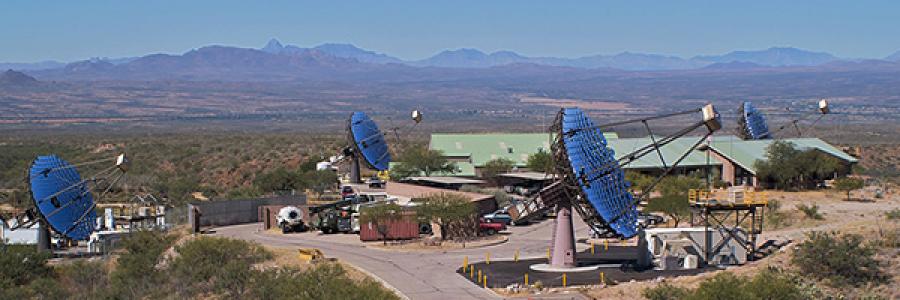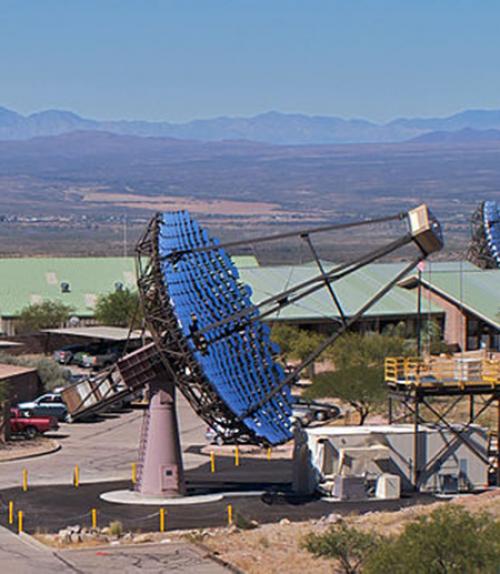An incoming Cornell graduate student in astronomy is involved in recently-published work that may reinvigorate an older method of measuring the angular size of stars, using new technology and computing capability.
Jonathan Davis is a contributing author to “Demonstration of Stellar Intensity Interferometry with the Four VERITAS Telescopes,” published July 20 in Nature Astronomy and the lead creator of software that helps scientists know what stars are useful to study using the method.
Stellar intensity interferometry (SII) allows astronomers to use a series of telescopes to measure a unique property of starlight. Because of this, SII has the potential to allow scientists to essentially “digitally photograph” stars by using various devices, incredibly fast cameras, huge telescopes and huge computing power, Davis said, without having to connect the telescopes physically.
“With modern technology, massive telescopes, and the software we have today, we used the techniques of the past to obtain modern SII measurements with a much better signal than others obtained back in the 1960s.”
If scientists can measure a star’s angular diameter and know how far away the star is, they can calculate how big the star actually is.
The new results show that SII has the potential to make very high angular resolution measurements with modern technology and observatories. This could allow astronomers to better study things like limb darkening (where the central part of a star looks brighter than the edges), stellar features like star spots, or even structure around a star, Davis said.
“In the future, when even higher resolution instruments are a possibility, it might also be used to perform ‘model-independent imaging’ which is essentially taking a photograph,” he said.
“By being able to better understand the physical structure of stars, the structure around stars and how they deform, scientists can build and test models that predict how they came to be that way, which leads to better understandings of all sorts of fundamental physics,” Davis said.
“You need a star in the right range of angular size and brightness and we don’t want to go through star catalogs by hand, so my software queries star catalogs, takes the physical qualities of an observatory and runs custom Monte Carlo simulations (an algorithm that can use randomness to predict measurement error). My software uses this process to predict and list which stars are best to measure” he said.
Along with his interest in research, Davis is also committed to communicating his work to others, so he’s created a blog, astronomaestro.com, which includes posts written for non-astronomers.
Davis is interested in computational astrophysics, observational astronomy and cosmology. Upon his arrival at Cornell this fall, he hopes to continue doing work involving these fields.
“Initially developed in the 1960s, intensity interferometry set the gold standard for measurements of diameters of stars, and for decades could not be improved upon,” said James Lloyd, Cornell professor of astronomy. “It’s remarkable that the technique has been reinvigorated, primarily with the incorporation of modern computational power, and is a sign that we are now in a data-driven era of astronomy.”






